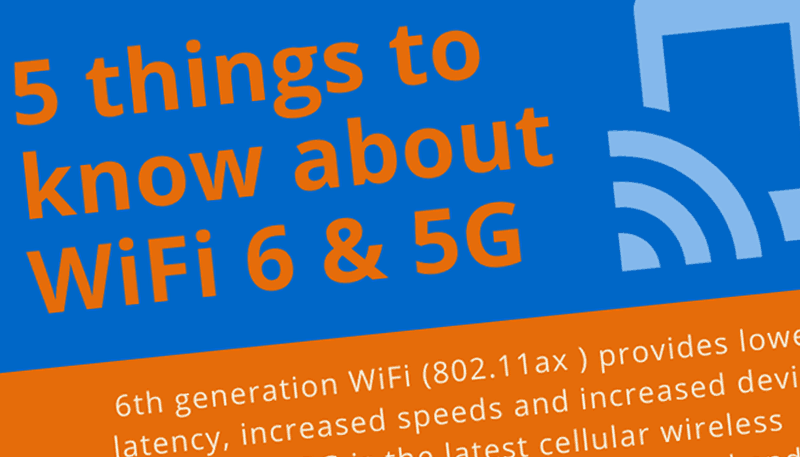
WiFi 6 (or 802.11ax – to give it the proper name) and 5G are the next generations of wireless networks that will be rolled out around the world. These new standards aim to redefine how we use digital applications over the coming years.
So, we can better understand how to architect wireless networks within businesses and public spaces over we need to appreciate the similarities and differences between these standards. The aim of this post is to summarise some interesting information which should help you to understand the key differences as well as determining how these technologies can be used:
- The same organisation (the IEEE) has developed both the WiFi 6 and 5G standards. The two standards can work together in order to support different use cases
- WiFi 6 has been developed to support wireless network indoors. The technology is likely to be widely implemented within user-dense environments such as stadiums, concert/convention venues, shopping centres, offices, education, etc…
- 5G is designed to provide wireless connections within outdoor spaces. This includes use cases where objects move at high speed including trains or cars on motorways
- Wi-Fi 6 and 5G are suitable for use in many industries, including those in which IoT systems are an important component, such as manufacturing, public health, energy, hotels and schools.
- WiFi 6 was expected to be ratified at some point in 2019. However, now it is more likely to land in Q1 2020. On the other hand, for 5G it will take time for cellular providers to refresh the equipment used on their networks. As a result, we can expect 5G usage to be widely implemented in major cities in countries such as the United States, UK, Germany, France, Japan and China by around 2021
Click here to get our latest GGR infographic so you can find out more!

